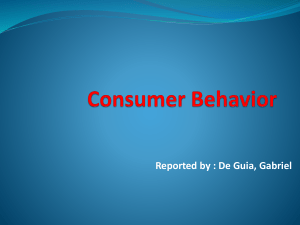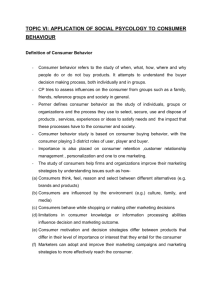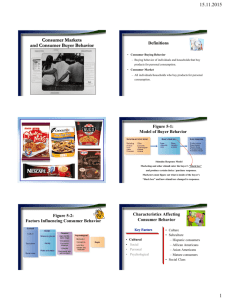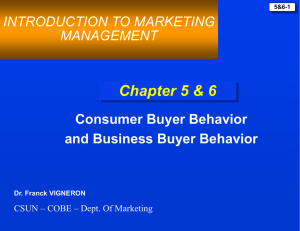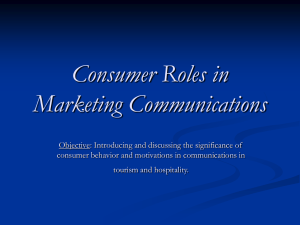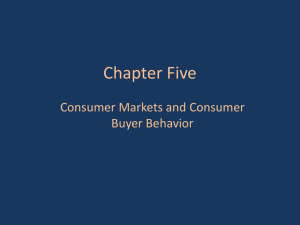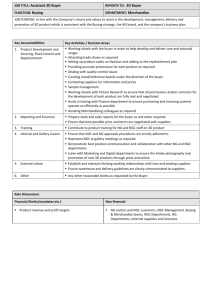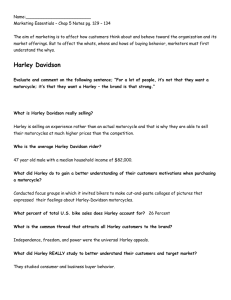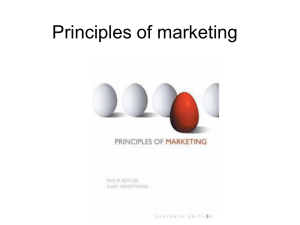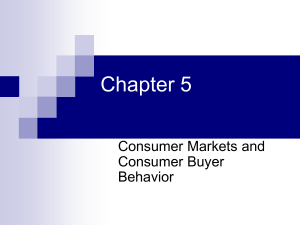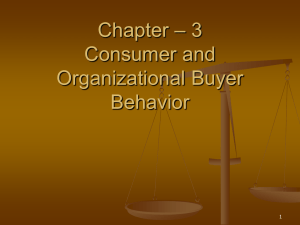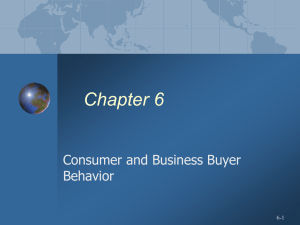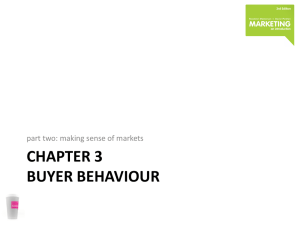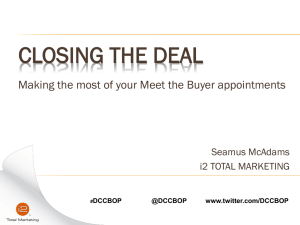Chapter 5: Consumer Markets
advertisement
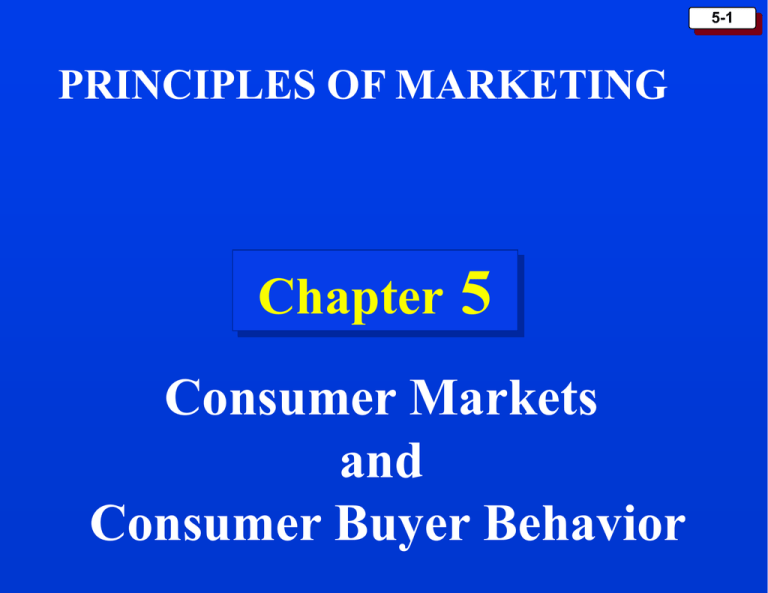
5-1 PRINCIPLES OF MARKETING Chapter 5 Consumer Markets and Consumer Buyer Behavior Consumer Buying Behavior • Consumer Buying Behavior refers to the buying behavior of final consumers (individuals & households) who buy goods and services for personal consumption. • Study consumer behavior to answer: “How do consumers respond to marketing efforts the company might use?” 5-2 Model of Consumer Behavior Product Price Marketing and Other Stimuli 5-3 Economic Technological Place Political Promotion Cultural Buyer’s Decision Process Product Choice Brand Choice Dealer Choice Buyer’s Black Box Buyer’s Response Characteristics Affecting Consumer Behavior Purchase Timing Purchase Amount Characteristics Affecting Consumer Behavior Culture Social Personal Psychological Buyer 5-4 Factors Affecting Consumer Behavior: Culture • Most basic cause of a person's wants and behavior. • Values • Perceptions Subculture Social Class • Groups of people with shared value systems based on common life experiences. • People within a social class tend to exhibit similar buying behavior. • Hispanic Consumers • Occupation • African American Consumers • Income • Asian American Consumers • Education • Mature Consumers • Wealth 5-5 Factors Affecting Consumer Behavior: Social 5-6 Groups •Membership •Reference Family •Husband, wife, kids •Influencer, buyer, user Roles and Status Social Factors Factors Affecting Consumer Behavior: Personal 5-7 Personal Influences Age and Family Life Cycle Stage Occupation Economic Situation Personality & Self-Concept Lifestyle Identification Activities Opinions Interests VALS 2 5-8 Actualizers Principle Oriented Status Oriented Abundant Resources Action Oriented Fulfilleds Achievers Experiencers Believers Strivers Makers Strugglers Minimal Resources Factors Affecting Consumer Behavior: Psychological Motivation Beliefs and Attitudes Psychological Factors Learning Perception 5-9 Maslow’s Hierarchy of Needs Self Actualization (Self-development) Esteem Needs (self-esteem, status) Social Needs (sense of belonging, love) Safety Needs (security, protection) Physiological Needs (hunger, thirst) 5-10 Types of Buying Decisions 5-11 High Involvement Low Involvement Significant differences between brands Complex Buying Behavior VarietySeeking Behavior Few differences between brands DissonanceReducing Buying Behavior Habitual Buying Behavior The Buyer Decision Process Need Recognition Information Search Evaluation of Alternatives Purchase Decision Postpurchase Behavior 5-12 The Buyer Decision Process 5-13 Step 1. Need Recognition Need Recognition Difference between an actual state and a desired state Internal Stimuli External Stimuli • Hunger • TV advertising • Thirst • Magazine ad • A person’s normal needs • Radio slogan •Stimuli in the environment The Buyer Decision Process 5-14 Step 2. Information Search Personal Sources •Family, friends, neighbors •Most influential source of information Commercial Sources •Advertising, salespeople •Receives most information from these sources Public Sources Experiential Sources •Mass Media •Consumer-rating groups •Handling the product •Examining the product •Using the product The Buyer Decision Process 5-15 Step 3. Evaluation of Alternatives Product Attributes Evaluation of Quality, Price, & Features Degree of Importance Which attributes matter most to me? Brand Beliefs What do I believe about each available brand? Total Product Satisfaction Based on what I’m looking for, how satisfied would I be with each product? Evaluation Procedures Choosing a product (and brand) based on one or more attributes. The Buyer Decision Process Step 4. Purchase Decision Purchase Intention Desire to buy the most preferred brand Attitudes of others Unexpected situational factors Purchase Decision 5-16 The Buyer Decision Process Step 5. Postpurchase Behavior Consumer’s Expectations of Product’s Performance Product’s Perceived Performance Satisfied Customer! Dissatisfied Customer Cognitive Dissonance 5-17 Stages in the Adoption Process Awareness Interest Evaluation Trial Adoption 5-18 Early Majority Innovators Percentage of Adopters Adoption of Innovations Early Adopters 34% Late Majority Early Laggards 34% 16% 13.5% 2.5% 5-19 Time of Adoption Late Influences on the Rate of Adoption of New Products Communicability Relative Advantage Can results be easily observed or described to others? Is the innovation superior to existing products? Divisibility Product Characteristics Can the innovation be used on a trial basis? Complexity Is the innovation difficult to understand or use? 5-20 Compatibility Does the innovation fit the values and experience of the target market?
